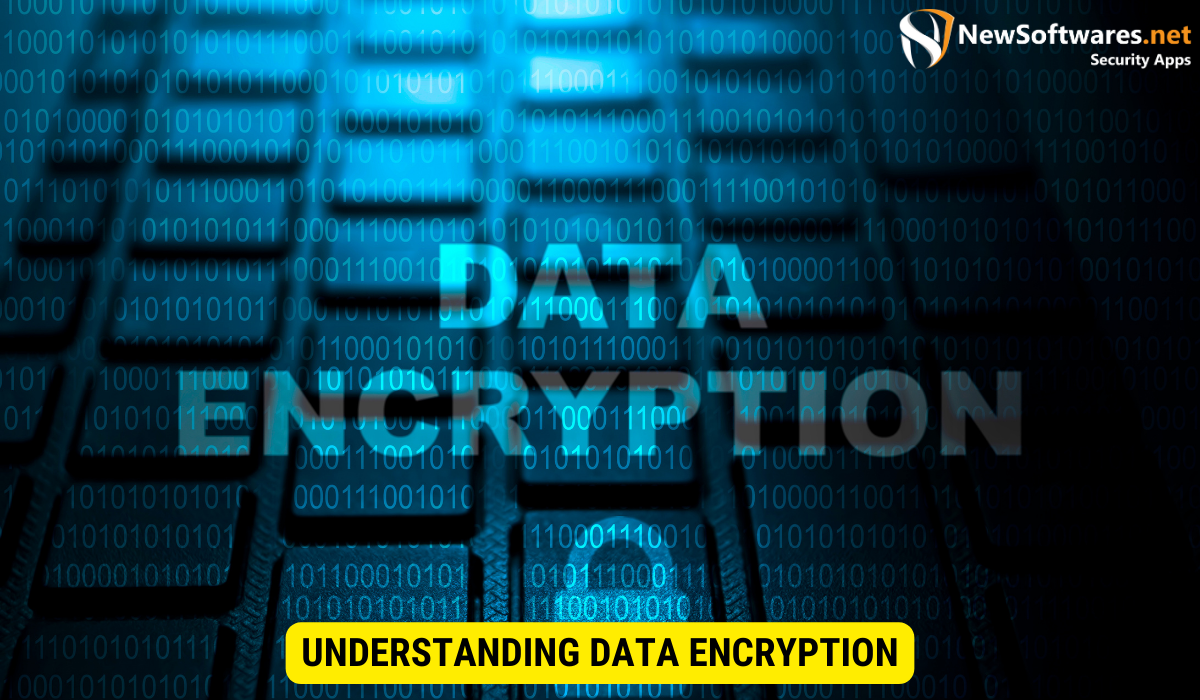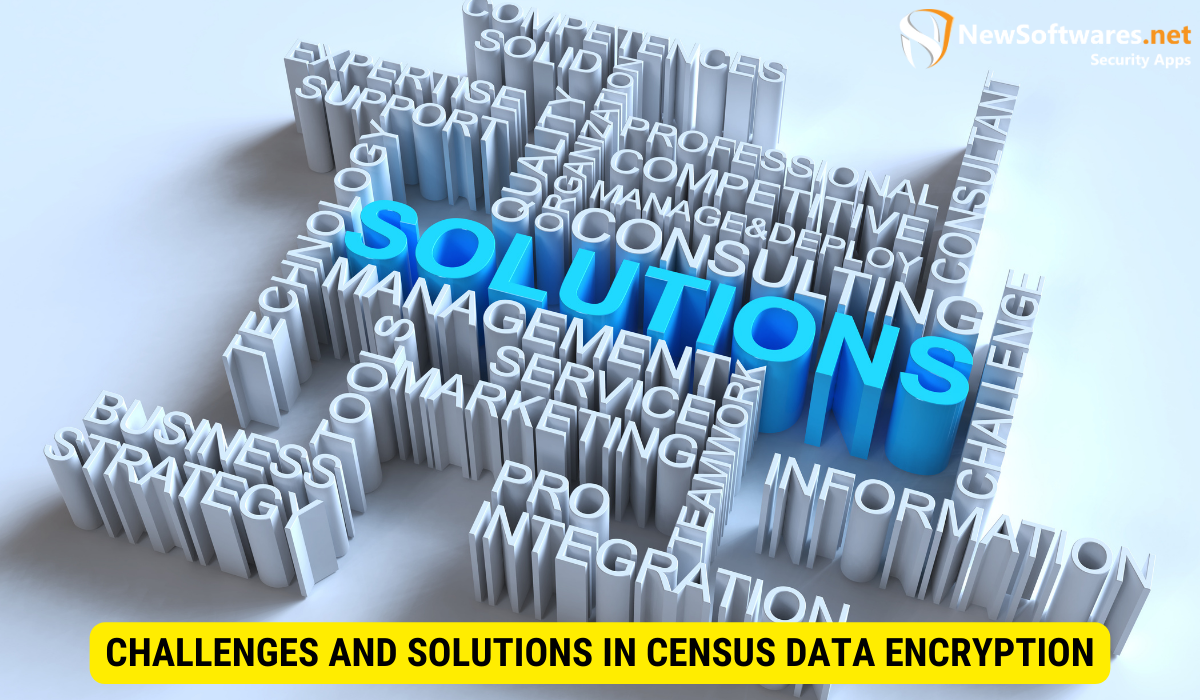The Census Bureau uses encryption software, including advanced encryption algorithms like AES-256, to protect sensitive information and ensure data confidentiality.
In the modern world, where data privacy and protection are paramount, it is crucial for organizations like the Census Bureau to employ robust encryption measures. Encryption software plays a vital role in safeguarding sensitive information and ensuring its confidentiality. Together, we will explore the importance of data encryption in the Census Bureau and highlights the software used to achieve this crucial task.
Understanding Data Encryption

Data encryption is the procedure of transforming plain text into an unreadable form, known as ciphertext, to prevent unauthorized access. It involves the use of algorithms and cryptographic keys to scramble data, making it unintelligible to anyone without the proper decryption keys.
The Importance of Data Encryption in Census
Data encryption is of utmost importance in the Census Bureau. The census collects a vast amount of personal and demographic information from individuals, which needs to be protected at all costs. Encryption ensures the confidentiality and integrity of this data, preventing unauthorized access or modification.
Key Concepts in Data Encryption
There are several key concepts to understand in data encryption:
- Symmetric Encryption: This type of encryption uses the same key for both encryption and decryption. Symmetric encryption plays a crucial role in data protection. It is a fast & efficient encryption method that is commonly used to secure data at rest. In symmetric encryption, the same key is used to both scramble and unscramble the data. This means that the sender and the receiver must share the same secret key, which can be a potential vulnerability if not properly managed.
- Asymmetric Encryption: This involves the use of a public key for encryption & a private key for decryption. Asymmetric encryption, also known as public-key encryption, is a cryptographic method that uses a pair of keys: a public key and a private key. The public key is used to encrypt the data, while the private key is used for decryption. This method gives a superior level of security compared to symmetric encryption, as the confidential key remains top secret and is not shared with anyone.
- Encryption Algorithms: These are mathematical functions used to encrypt and decrypt data. Common algorithms include AES, RSA, and DES. Encryption algorithms are the mathematical functions that determine how the data is transformed into ciphertext and vice versa. These algorithms are designed to be computationally hard to reverse, ensuring the security of the encrypted data. Advanced Encryption Standard (AES), Rivest-Shamir-Adelman (RSA), and Data Encryption Standard (DES) are some of the commonly used encryption algorithms in various applications.
- Encryption Key Management: This refers to the secure generation, storage, and distribution of encryption keys. Encryption key management is a serious aspect of data encryption. It involves the secure generation, storage, and distribution of encryption keys. Proper key management ensures that the encryption keys are protected from unauthorized access and are available when needed for encryption or decryption. Key management systems often employ various security measures, such as encryption key rotation, key escrow, and secure key storage, to safeguard the keys from potential threats.
Understanding these key concepts in data encryption is essential for implementing robust encryption practices and ensuring the security of sensitive information.
The Census Bureau and Data Security
The Role of Software in Census Data Security
The Census Bureau understands the critical significance of data security. To ensure the protection of sensitive information, they rely on advanced security software, including robust encryption tools. Software serves as the first line of defense against potential data breaches and safeguards the privacy of the individuals participating in the census.
One of the key aspects of the software used by the Census Bureau is its ability to encrypt data. Encryption is the progression of converting information into a code that can only be decipher by authorized parties. This ensures that even if illegal individuals gain access to the data, they will not be able to understand or use it. The encryption algorithms used by the Census Bureau are carefully selected and regularly updated to stay ahead of emerging threats.
In addition to encryption, the software employed by the Census Bureau also includes other security features. For example, it has built-in mechanisms to detect and prevent unauthorized access attempts. This helps to safeguard the data from hackers or other malicious actors who may try to gain unauthorized access to the system. The software also includes features that monitor the system for any suspicious activities, such as multiple failed login attempts or unusual data access patterns.
Data Security Measures in the Census Bureau
Alongside encryption software, the Census Bureau has implemented various data security measures to reinforce overall protection. These measures include secure data storage, firewall systems, access control mechanisms, and constant monitoring for any security threats or vulnerabilities.
Data storage is a critical aspect of data security. The Census Bureau ensures that all data is stored in secure environments, both physically and digitally. Physical storage facilities are equipped with state-of-the-art security systems, including surveillance cameras, access control systems, and alarms. Digital storage systems are protected by multiple layers of security, including firewalls, intrusion detection systems, and data backup mechanisms.
Firewall systems play a crucial role in protecting the Census Bureau’s data from unauthorized access. These systems act as a barrier among the internal network & external networks, filtering incoming and outgoing network traffic based on predefined security rules. This helps to prevent unauthorized individuals or malicious software from gaining access to the important data stored within the Census Bureau’s network.
Access control mechanisms are another important aspect of data security. The Census Bureau employs strict access control policies to ensure that only allowed individuals have access to sensitive information. This involves implementing strong authentication mechanisms, for instance multi-factor authentication, and habitually reviewing and updating access rights to minimize the risk of unauthorized access.
Constant monitoring is essential to detect and respond to any security threats or vulnerabilities promptly. The Census Bureau employs a dedicated team of security professionals who continuously monitor the network and systems for any signs of suspicious activities. They also stay updated with the newest security trends and collaborate with external security experts to make certain that their security measures are robust and effective.
Encryption Software Used by the Census Bureau
Overview of Encryption Software in Census Data Protection
The Census Bureau utilizes specific encryption software designed to meet the rigorous data protection requirements. This software incorporates industry-standard encryption algorithms, making it more tricky for cybercriminals to gain unauthorized access to sensitive information.
Features of the Encryption Software
The encryption software employed by the Census Bureau possesses several key features:
- Advanced Encryption Algorithms: The software uses robust encryption algorithms, such as AES-256, to provide a high level of security.
- Key Management: It ensures proper and secure management of encryption keys, including their generation, storage, and rotation.
- Secure Data Transmission: The software facilitates the secure transmission of encrypted data, protecting it while in transit.
- Data Integrity: The software ensures the integrity of the encrypted data, preventing any unauthorized modifications.
How the Encryption Software Works?
The Process of Data Encryption in Census
The data encryption process in the Census Bureau involves several steps:
- Data Identification: Before encryption, sensitive data is identified, ensuring that only the necessary and relevant information is encrypted.
- Key Generation: Encryption software generates strong encryption keys that are unique to each data set.
- Data Encryption: Using the encryption keys, the software encrypts the identified data, transforming it into ciphertext.
- Key Management: The encryption software securely manages and stores the encryption keys, ensuring their availability when needed.
Ensuring Data Integrity and Confidentiality
Encryption software not only provides data confidentiality but also ensures data integrity during the encryption and decryption processes. This prevents unauthorized modifications or tampering of the encrypted information, maintaining its integrity and trustworthiness.
Challenges and Solutions in Census Data Encryption

Common Issues in Data Encryption
Data encryption in the census presents various challenges, including:
- Performance Impact: Encryption can impose a performance overhead on data processing and transmission.
- Key Management: Proper key management is crucial to avoid illegal access or loss of encryption keys.
- Compatibility: Ensuring compatibility between different encryption software and systems used within the census.
Overcoming Encryption Challenges in Census Data
To overcome these challenges, the Census Bureau employs strategies such as:
- Optimized Encryption Algorithms: Using efficient encryption algorithms minimizes the performance impact on data processing.
- Secure Key Management Systems: Implementing robust key management systems ensures the safety and availability of encryption keys.
- Interoperability Standards: Following industry standards and best practices to ensure compatibility between different encryption software and systems.
Key Takeaways
- Data encryption is crucial for the Census Bureau to protect sensitive information.
- Encryption software plays a vital role in ensuring data confidentiality and integrity.
- The Census Bureau implements various security measures, such as encryption, to protect data.
- Encryption software facilitates the secure transmission of data and prevents unauthorized access.
- Challenges in data encryption can be overcome through optimized algorithms and secure key management systems.
FAQs
Why does the Census Bureau need data encryption?
Data encryption is vital for the Census Bureau to protect the privacy and confidentiality of the personal and demographic information collected. Encryption makes sure that even if unauthorized access occurs, the data remains unreadable and unusable.
How does encryption software work?
Encryption software transforms plain text data into ciphertext using encryption algorithms and cryptographic keys. This ciphertext can only be decrypted back to its original form using the corresponding decryption keys.
What encryption algorithms are commonly used in census data protection?
Commonly used encryption algorithms in census data protection include AES (Advanced Encryption Standard), RSA (Rivest-Shamir-Adelman), and DES (Data Encryption Standard).
What challenges are faced in data encryption for the census?
Challenges in data encryption for the census include performance impact, key management, and ensuring compatibility between different encryption systems.
How can encryption challenges be overcome in census data?
Encryption challenges can be overcome through the use of optimized encryption algorithms, implementing robust key management systems, and following interoperability standards.
Conclusion
Data encryption is a critical aspect of ensuring data security and confidentiality in the Census Bureau. The Bureau employs encryption software that incorporates advanced encryption algorithms, secure key management, and data integrity measures. Despite the challenges faced in data encryption, the Census Bureau continuously strives to provide a secure environment for the personal and demographic data collected. With these robust encryption measures in place, individuals can feel confident in participating in the census, knowing that their information is protected.
